Ketogenic Dieting 101: Science, History, Implementation, Risks, and Benefits
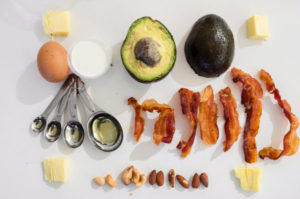
This keto diet overview will give you insights into ketones, ketosis, the history of keto, implementation of ketogenic dieting, and pros and cons of the keto diet.
Part 1: Ketosis, the Ketogenic State, and Weight Loss Using the Keto Diet
The science behind ketosis
To understand ketosis, you must first understand the science behind fat metabolism. When you remove carbohydrates from your diet, your body turns to fats for energy. Metabolized fats in the body are broken down into metabolic by-products known as ketone bodies. Ketone bodies, more commonly known as “ketones,” exist in three molecular states in the bloodstream: acetone, beta-hydroxybutyric acid, and acetoacetic acid.
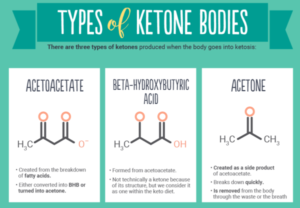
The three ketone bodies – acetoacetate, beta-hydroxybutryic acid, and acetone.
The optimal ketone zone: Get into the proper ketogenic state
As you continue to live on a carbohydrate-reduced diet, fat metabolism leads to the build-up of ketones in your bloodstream. This metabolic state is known as “ketosis.” In other words, ketosis results in the body when there is an absence of carbohydrates. Usually, the body can produce ketones, but only in a small amount. The quantities are higher when the body is deliberately placed into carbohydrate starvation. When this occurs, the liver breaks down fats to manufacture ketones to feed the essential organs of the body such as the brain and your heart.
There are three states of ketosis: the optimal ketone zone, starvation ketosis, and diabetic ketoacidosis. To get into the ketone zone for a ketogenic diet, you must maintain a blood ketone level between 0.5-3.0 millimolar. The best way to measure blood ketone levels to ensure you are in the optimal ketone zone is to get a blood ketone meter like this one.
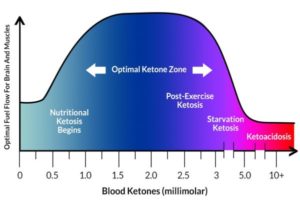
The proper ketone zone for weight loss is 0.5-3.0 millimolar ketone blood concentration.
The ketogenic diet is a weight loss strategy that is based around the science of ketone body production. In a way, it is a combination of the first part of the popular Atkins diet as well as the Paleo diet. These two methods emphasize the use of protein to fuel the body. The end result of protein and fats fueling the body is to facilitate fat burning. As your body adapts to the keto diet weight loss strategy, it leads to fewer cravings and weight loss. While you are losing weight, a common issue is the loss of muscle and fat simultaneously. By maintaining strong protein levels as your body produces greater amounts of ketones, weight loss can occur without as significant a loss of muscle size or definition.
Part 2: The History of Fasting and the Ketogenic Diet
For thousands of years, humanity has always associated fasting with the cure of diseases. Ancient Greek and Indian physicians have relied for the treatment of certain ailments over the course of centuries. There is nothing new in using to achieve weight loss, just as the ketogenic diet does today.

Fasting as a diet has been around for thousands of years. The keto diet has been around for a century.
In the 1920s and 1930s, the ketogenic diet was very popular. Its popularity lies in the fact that it was used to cure epilepsy, which was very endemic to the people of that time. The dieting method evolved as a solution to non-mainstream fasting. This type of fasting was considered as an effective method for an epileptic cure. When the ketogenic diet was used as the mainstream solution for epilepsy, it was very successful in treating epileptic patients. However, with the development of anticonvulsant medications, it is now less frequently used as a treatment option for epilepsy.
Despite this, some people still rely on the ketogenic diet for the treatment of epilepsy. Even in situations where the ketogenic was not used for the cure of epilepsy outright, it was employed as a way of controlling the symptoms of epilepsy. In whichever way one sees it, it was useful for the control of that condition.
Part 3: Deploying the Keto Diet in Your Lifestyle
Minimum number of carbs to achieve ketosis
Now that we know the science and history of ketosis, lets discuss how to implement it into your lifestyle. When you are eating for the ketogenic diet, certain foods are allowed, and others are not. In order to receive sustainable results, consistency is key. The core premise of the keto diet is to consume smaller quantities of carbs to activate ketosis. According to the prevailing knowledge in the weight loss community, daily carbohydrate intake should not exceed fifty (50) grams each day to increase ketone body production and place your body in a ketogenic state. Fifty grams of carbohydrates per day is baseline ketosis. For every carbohydrate you remove below fifty, meaning 49, 48, 47, and so on, results from weight loss efforts continue to improve. You will lose more weight if you consistently remove more and more carbohydrates from your diet.
What types of foods to eat while following ketosis
Since keto is a low-carb diet, you need to consume foods that do not have carbohydrates. If you want to become successful in the keto diet, you must avoid consuming sugary foods. In the same way, you have to do away with those foods that contain carbohydrates such as potatoes, rice, pasta, and bread. Most importantly, it implies that you must do away with ultra-processed foods, instead sticking to natural, whole food sources of meats and vegetables.
Ideal ratio of macronutrients for the ketogenic diet
To achieve ketosis, you need to strike a balance between your proteins, fats, and carbohydrates based on the percentage of calories you consume each day. The most traditional ketogenic macronutrient ratio is as follows:
• 5% calories from carbohydrates each day
• 15-25% calories from protein each day
• 75% calories from fat each day
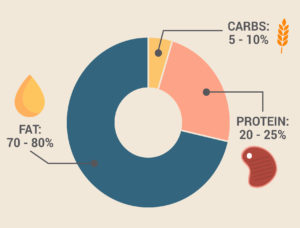
The keto diet works best when you maintain 5-10% of your daily calories from carbs, 20-25% from protein, and 70-80% from fat.
Also, you must take into account that carbohydrates and protein contain only 4 calories per gram, whereas fat contains 9 calories per gram. In other words, 20 grams of carbohydrates does not have the same caloric content as 20 grams of fat. For this ratio on a 2000 calorie diet, your macronutrient breakdown might look something like this:
• 25 grams of carbohydrates each day
• 100 grams of protein each day
• 167 grams of fat each day
Keep in mind that the effectiveness of the weight loss result will increase as the number of carbohydrates decreases, assuming your are able to maintain a ketone blood concentration between 0.5-3.0 millimolar.
Stay hydrated & choose drinks wisely

Water, coffee, and tea are not off limits on the keto diet. You do need to watch out for hidden sugars in drinks.
Water is very important in any weight loss plan. The same thing is applicable in the keto diet. There are different ways you can remain hydrated and they include water, seltzer water, tea, coffee, and so on. When following keto, it is important to avoid drinking any hidden sugars and sweeteners that can creep up in certain drinks that appear to be sugarless. When following the keto diet, sugary drinks can ruin your efforts to achieve ketosis and you would not achieve your purpose. If you want to drink tea or coffee, there is nothing wrong with adding a small amount of cream or milk to the drink. The occasional glass of wine will not wreck your keto weight loss efforts as long as you keep it to a single glass.
Also, when consuming carbohydrates such as those in wine, timing is important to your success. Time the consumption of these carbohydrates to earlier in the day such that your body still has time to burn the excess energy off before going to sleep. Excess carbs left in your body at the end of the night will lead to the development of adipose or fatty tissue as you sleep.
Make your keto plan sustainable, and right for you
If you want to achieve your objective of weight loss, then you must have a keto diet plan in place that you can stick to. Everyone is different, so you must find what works for you. When developing a keto diet plan for you, make sure the plan covers all meals – breakfast, lunch, and dinner, with snacks in between. The plan has to be complete, and there must be the ability to change a meal here or there to keep you adaptable. Things happen in life and you need to prepare for them. Furthermore, we recommend you use this resource for an abundance of keto recipes, so you do not get bored or lost in repetition.
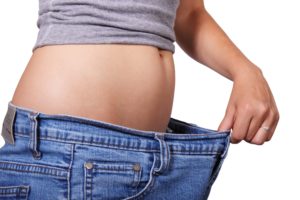
In order to see consistent progress with any diet, take the proper steps to plan and ensure that it is sustainable.
When deploying any diet plan into your lifestyle, your ultimate focus should be on two things: first, to know the most effective way to achieve your health goal based on your metabolism; second, to develop an eating plan that accompanies your goal and provides enough flexibility into your current lifestyle. The keto diet is no different. If you consistently observe these two dietary goals, you can achieve your personal health objectives.
Part 4: Pros and Cons of Ketosis
Pros of Keto
Ketogenic diets are very helpful in providing solutions to some of the health and social challenges affecting many people across the globe. The benefits of keto are similar to you get from other dietary plans, but in a way, it has proven to be more effective than similar diets such as Atkins or Paleo at achieving weight loss goals.
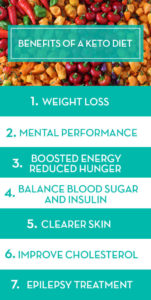
The 7 main benefits of a keto diet.
Facilitate fat loss
Clinical trials show that ketosis facilitates fat loss. When there are low quantities of carbs in the body, your body system converts to a fat-burning machine as excess fat gets consumed by your body. When your body consumes the excess fats in the system, digestive hormone production is reduced, which further increases fat loss. It is a positive feedback loop.
Appetite control
Another positive for keto is appetite control. When you constantly burn fats stored in the body, the underlying implication is that it can get access to all those stored energies in the body and you will feel full more often. When your appetite is suppressed, your body will achieve a catabolic state that will spark internal metabolism of stubborn fatty tissues. Furthermore, when you engage in the keto diet, it becomes easier to carry out intermittent fasting. One of the effective ways of dealing with weight loss is to feel satisfied and reduce food cravings. Food satisfaction and reduced cravings help you to take food for what it is – fuel for your body.
Type 2 diabetes management
Apart from losing excess weight, the keto diet can even help reverse adult onset type 2 diabetes. Studies have confirmed that ketosis can help sway your body from a diabetic state. Even if does not reverse the problem entirely, it can be effective in managing type 2 diabetes. This is because the keto diet’s focus – removing sugar from the diet – can improve diabetic food response.
Health markers improvement
A number of studies indicate that a low carb diet improves health markers. Furthermore, in a two year study conducted on the keto diet, inflammatory markers such as C-reactive proteins have been shown to diminish in keto dieters by as much as 39%.
Mental performance and energy
Another great benefit is that the ketogenic diet helps enhance mental performance. In ketosis, people see a tremendous increase in energy. Studies have shown that during ketosis, people are bound to be more energetic once they make it past the initial adjustment period.
Calms your stomach
Clinical trials have also shown that a keto diet is good for those that often suffer from upset stomach. After your body fully adjusts to keto, some studies have shown that you will feel less bloating, cramping, and have fewer digestive issues.
Treatment for epilepsy
Several studies conducted in the past have indicated that the ketogenic diet is a solution to epilepsy. Since 1920, ketogenic dieting has been in use for the treatment of epileptic patients. Previously, it was used for epileptic children; in recent years, it has also been used for epileptic adults. Keto dieting has proven effective as a treatment for the mitigation of and reversal of epileptic symptoms.
Other health benefits of keto
There are several other benefits of keto for different types of people. Some of them include:
• Reducing blood pressure
• Acne reduction
• Migraine control
• Controlling mental health problems
It is important to remember that results vary from person to person as our needs and bodies are all very different.
Cons of Keto
While the benefits of ketosis are plentiful, studies have also indicated some crucial negative aspects of following a ketogenic diet.
Fatigue & brain fog
In some people, the keto diet can trigger fatigue as well as brain fog. This typically occurs when people first transition into the keto diet and can be alarming. Fatigue and brain fog tend to taper off after a few weeks of sustained ketosis as your body adapts to the new metabolic state.
Altered blood lipid profiles
Secondly, research has shown that the ketogenic diet can greatly alter blood lipid profiles. Bad cholesterol such as LDL has been shown to increase for some people undergoing a well-planned ketogenic diet; however, the bad cholesterol decreased for others undergoing keto. In other words, there have been mixed outcomes for blood lipid profile changes for people undergoing keto. This occurs due to the large amounts of fats consumed when undergoing the ketogenic diet.
Loss of protein-sparing effect
There have been multiple studies that indicate fat is far worse than carbohydrates at creating what is known as the protein sparing effect. The protein sparing effect occurs when your body is not breaking down muscles during metabolism. When a person switches from a diet with carbohydrates to a carbohydrate-free diet, a large spike in their urea production occurs. Urea is a nitrogen-containing breakdown component of protein. This indicates that the body is breaking down and excreting more protein from muscle tissues when undergoing ketosis.
Micronutrient deficiencies
Furthermore, studies indicate that it can trigger micronutrient deficiencies in the body. Micronutrients such as vitamins and minerals are essential components to metabolic processes within the body. This is because quantities of carbs in the body are restricted and this affects the quantity in the body. Some people need more or less micronutrients depending on their metabolism and DNA, so it is important to consider your unique vitamin and mineral requirements when considering a ketogenic diet.
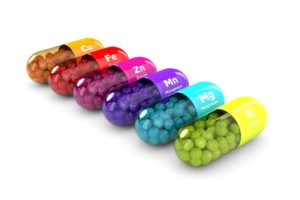
Micronutrients must be accounted for when undergoing a diet such as keto. Underscoring the importance of this is how some of us require more micronutrients than others based on our genetic vitamin and mineral metabolisms.
Bringing it all together
Ketosis has been useful as a weight loss tool and will continue to be. It is associated with many health benefits such as weight loss, skin repair, and treatment of epilepsy. You can derive all these benefits when you stick to the dietary provisions. Ketosis weight loss is a trendy method for burning off that excess body fat, but a tailored ketosis plan needs to be put in place to address your unique health factors and get the best results possible. You still need to decide if the diet is right for you.
If you are planning to make a change to the keto diet, you will be at a major advantage if you understand how your body metabolizes proteins, fats, and carbohydrates. The only way to know what macronutrient (protein, fat, and carbohydrate) ratios your body needs is to take a DNA test and assess the results to build a well-informed health plan. What works for someone else, will not necessarily work for you. Hearing of someone else’s success is anecdotal evidence and will only create false expectations, setbacks, and potentially diet failure. That is why you hear success and failure stories for any diet type – we are all unique individuals with different metabolic predispositions.
With a premium DNA health test from HealthCodes DNA, you will use a simple, easy to follow at home DNA kit to discover the ideal diet and foods for your unique body type as well as which exercises will facilitate your physical fitness goals the quickest. DNA tests from HealthCodes DNA are available domestically and internationally and can be taken using a non-invasive saliva sample collection device like the one shown here. With a little guidance using signals from your body’s genes, your transition to a better and healthier self can begin today and your hard-earned progress will remain sustainable for a lifetime.

HealthCodes DNA offers premium DNA health testing to help you identify the diet and exercises best for your unique body type.
